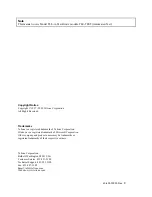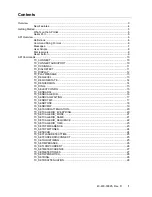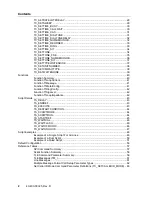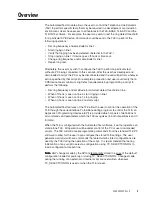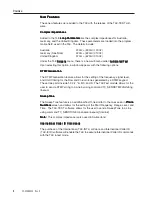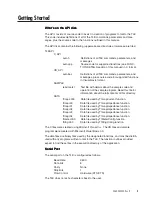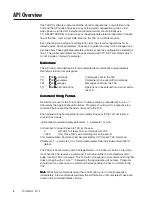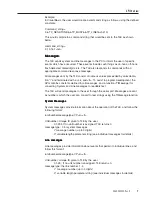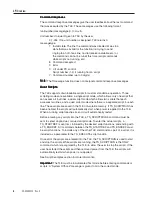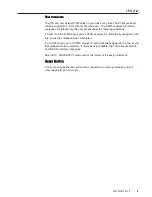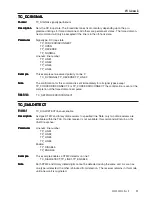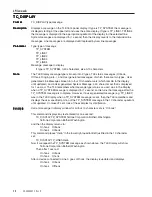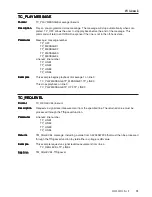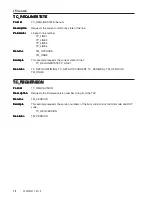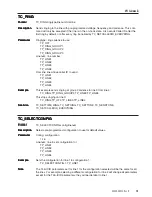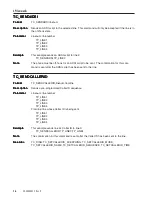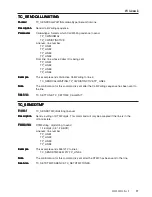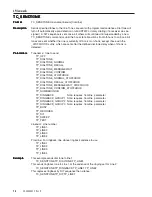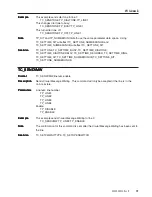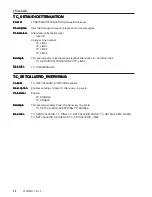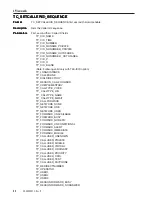
API Overview
40-400-00025, Rev. D
7
Example:
In Visual Basic, the user would create a command string as follows, using the defined
constants.
Command_string =
:0,&TC_SENDTONE&,&TP_BUSY&,&TP_LINE1&chr(13)
This would compile to a command string that would be sent to the TLE as shown
below.
command_string =
:0,13,16,1<ret>
Messages
Messages
Messages
Messages
Messages
The TLE sends system and line messages to the PC to inform the user of specific
events which have occurred. These events include such things as on-hook, off-hook,
flash detected, dialed digits, etc. The TLE also responds to commands with an
appropriate command response message.
All messages sent by the TLE consist of numeric values preceeded by an exclama-
tion “!” and terminated with a <cr> and <lf>. To assist in program development, the
API contains constants defined for all messages, and a function (TfMessage) for
converting System and Line messages to readable text.
The TLE will send messages to the user through the serial port. Messages are sent
as numbers, which the user can convert to text strings using the TfMessage function.
System Messages
System Messages
System Messages
System Messages
System Messages
System messages provide information about the operation of the TLE, and follow the
following format:
!unitnumber,messagetype,Y,P<cr><lf>.
Unitnumber: Unique ID given to TLE by the user.
0,1-255 If no unit number is assigned, TLE returns 0.
messagetype: 0 for system messages
Y: message number (up to 3 digits)
P: variable length parameter string (see individual messages for details)
Line messages
Line messages
Line messages
Line messages
Line messages
Line messages provide information about events that pertain to individual lines, and
follow this format:
!unitnumber,messagetype,Y,P<cr><lf>.
Unitnumber: Unique ID given to TLE by the user.
0,1-25: If no unit number is assigned, TLE returns 0.
messagetype: the line number 1 - 4
Y: message number (up to 3 digits)
P: variable length parameter string (see individual messages for details)


